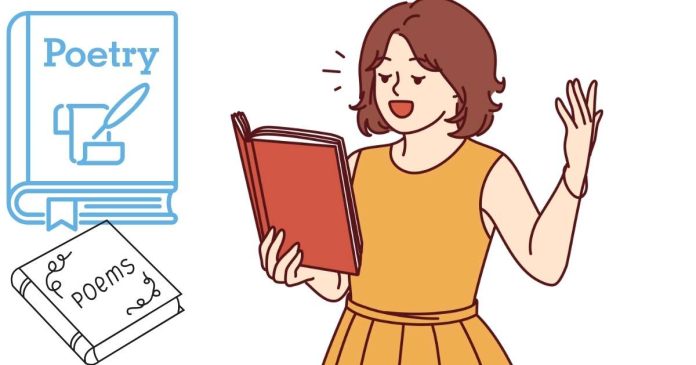A line break in poetry is a deliberate pause or division at the end of a line of verse. It serves as one of the defining features of poetry, distinguishing it from prose. Line breaks influence the rhythm, structure, and meaning of a poem, often guiding the reader’s pace and emphasizing certain words or ideas. Understanding line breaks can enhance one’s appreciation of poetry and its nuanced craft.
In this article, we’ll explore what a line break is, its significance in poetry, and provide examples to illustrate its impact.
What Is a Line Break?
A line break occurs when a poet decides to end one line and begin another, regardless of whether the sentence is complete. It creates a visual structure on the page and interacts with the rhythm, mood, and flow of the poem.
There are two main types of line breaks:
- End-stopped: The line ends with a punctuation mark, signaling a natural pause.
Example:
Shall I compare thee to a summer’s day?
Thou art more lovely and more temperate.
– William Shakespeare, Sonnet 18 - Enjambment: The sentence or thought continues onto the next line without a pause, creating a sense of flow.
Example:
The sun hovered above
the horizon, suspended
between day and night.
Example of a Line Break in Poetry
Let’s take a closer look at an example from William Carlos Williams’ poem The Red Wheelbarrow:
so much depends
upon
a red wheel
barrow
glazed with rain
water
beside the white
chickens.
Analysis of Line Breaks
In this poem, the line breaks create a deliberate pacing, slowing the reader down to focus on each image and word. By splitting phrases like “wheel / barrow” and “rain / water,” Williams emphasizes the simplicity and visual details of the scene. The line breaks also isolate key words like “depends” and “upon,” drawing attention to their significance.
Why Are Line Breaks Important in Poetry?
Line breaks serve multiple purposes in poetry:
- Affecting Rhythm and Pacing: Line breaks control how quickly or slowly a poem is read. Short, abrupt lines can create a staccato rhythm, while long, flowing lines generate a smoother pace.
- Emphasizing Words: A word at the end of a line often gains prominence because of its position. Similarly, the first word of the next line can carry added weight.
- Creating Dual Meanings: Enjambment can create ambiguity or multiple interpretations by splitting phrases in unexpected ways.
- Visual Impact: Line breaks contribute to the poem’s visual structure, making it more engaging on the page.
Experimenting with Line Breaks
Line breaks are a creative tool for poets, allowing them to shape how their work is read and experienced. To experiment with line breaks in your own poetry:
- Try reading your poem aloud and listen for natural pauses or emphases.
- Break lines to emphasize key words or phrases.
- Play with enjambment to create surprises or layered meanings.
Line breaks are a fundamental element of poetry, shaping the poem’s rhythm, structure, and emotional resonance. Whether end-stopped or enjambed, they guide the reader through the poet’s intended experience. By studying examples like The Red Wheelbarrow, readers and writers alike can gain a deeper appreciation for the artful use of line breaks in poetry.


